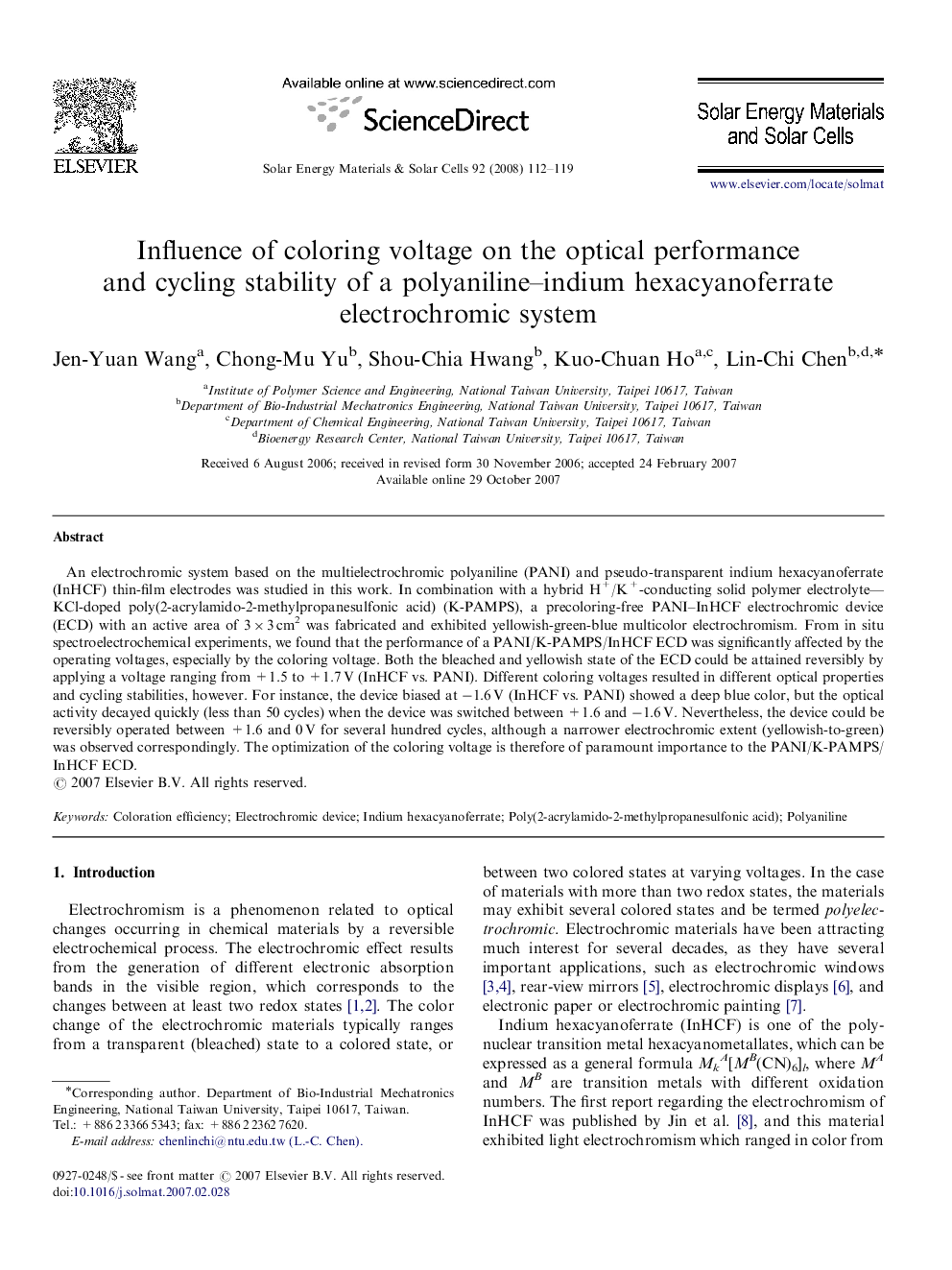| Article ID | Journal | Published Year | Pages | File Type |
|---|---|---|---|---|
| 81010 | Solar Energy Materials and Solar Cells | 2008 | 8 Pages |
An electrochromic system based on the multielectrochromic polyaniline (PANI) and pseudo-transparent indium hexacyanoferrate (InHCF) thin-film electrodes was studied in this work. In combination with a hybrid H+/K+-conducting solid polymer electrolyte—KCl-doped poly(2-acrylamido-2-methylpropanesulfonic acid) (K-PAMPS), a precoloring-free PANI–InHCF electrochromic device (ECD) with an active area of 3×3 cm2 was fabricated and exhibited yellowish-green-blue multicolor electrochromism. From in situ spectroelectrochemical experiments, we found that the performance of a PANI/K-PAMPS/InHCF ECD was significantly affected by the operating voltages, especially by the coloring voltage. Both the bleached and yellowish state of the ECD could be attained reversibly by applying a voltage ranging from +1.5 to +1.7 V (InHCF vs. PANI). Different coloring voltages resulted in different optical properties and cycling stabilities, however. For instance, the device biased at −1.6 V (InHCF vs. PANI) showed a deep blue color, but the optical activity decayed quickly (less than 50 cycles) when the device was switched between +1.6 and −1.6 V. Nevertheless, the device could be reversibly operated between +1.6 and 0 V for several hundred cycles, although a narrower electrochromic extent (yellowish-to-green) was observed correspondingly. The optimization of the coloring voltage is therefore of paramount importance to the PANI/K-PAMPS/InHCF ECD.
